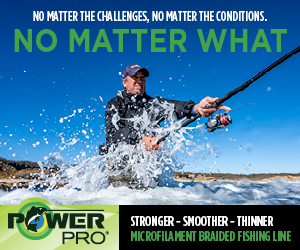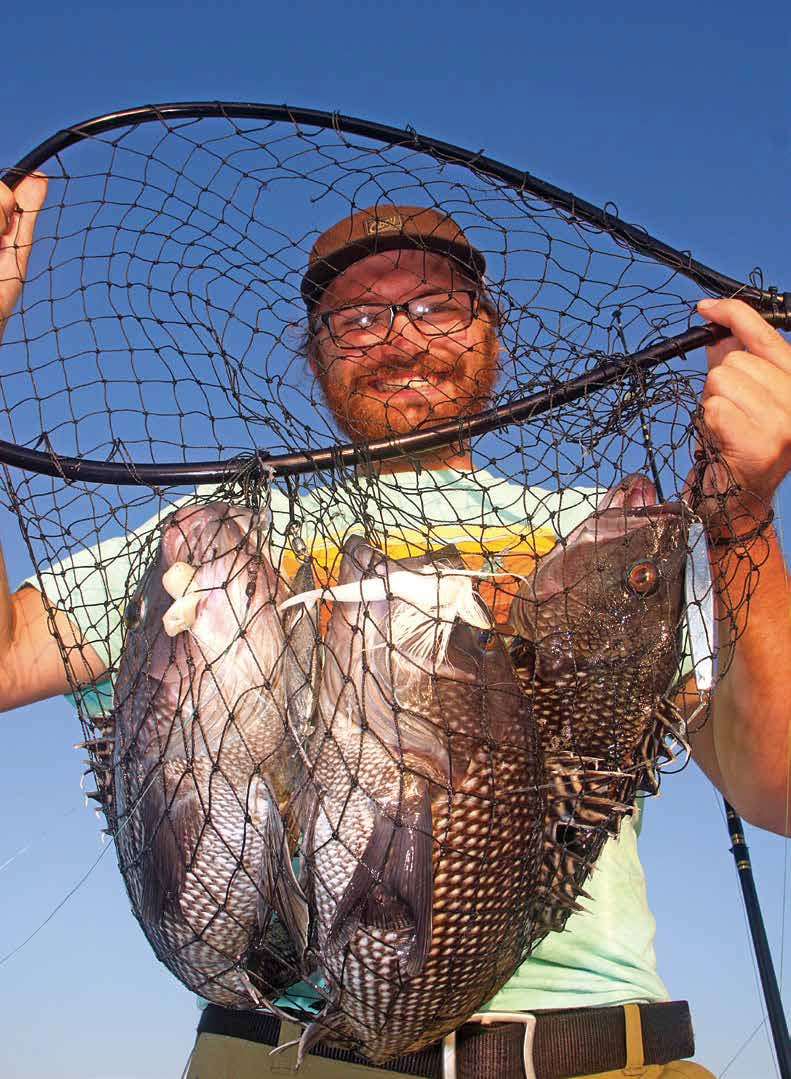
Swing diamond jigs and teasers to target humpback sea bass.
The 21-inch knothead sea bass inhaled my diamond jig as aggressively as any striper. After cautiously fighting the lit-up fish to the surface, my partner Elliott Taylor deftly scooped it with the net, taking us to one shy of our two-man limit.
“Another nice one!” Elliott exclaimed, as he lifted it from the net, and we admired its brilliant iridescent-teal markings.
“Heck yes!” I replied. “And all on lures. It’s sure nice not to deal with bait.”
Do you tire of the work and mess of cutting bait for black sea bass? Do you tire of swarms of dink sea bass and porgies picking you clean as soon as your sinker bounces bottom? If your answer is yes, then it’s time to eliminate the small bycatch by switching from soft bait to heavy hardware.
Humpback sea bass are not only aggressive, but they have bucket mouths and willingly inhale large, fleeing forage, or in this case, diamond jigs. Experts use the lightest jig possible given the wind, current and depth, which allows for the most action and feel. On offshore spots for example, pros carry jigs up to 12 ounces along with an assortment of 5- to 8-ounce diamonds, enough to easily reach bottom in deep water where they resemble prey like squid and herring.
“The best ‘diamond’ jig is actually a Norwegian jig, the same type typically used for cod but much smaller, specifically the 110-gram (4 ounce) or the 175-gram (6 ounce) Solvkroken stainless-steel model,” advised my friend, Capt. Ned Kittredge who targets big Northeast humpbacks. “While all Norwegian jig knockoffs and true diamond jigs are productive if fished properly, the precise curved shape of a Solvkroken Norwegian jig allows it to flutter well on the drop, which attracts big sea bass,” he added.
Bells and Whistles
While almost any diamond-jig hook works for large sea bass, I fish rugged reefs and therefore opt for a single 7/0 siwash, which is small enough for jumbo sea bass but big enough if stripers, bluefish or cod mix in, especially on those late-season trips off Block Island.
Experienced fishermen agree that jigs often out-fish standard rigs for the biggest fish by keeping shorts and pesky porgies at bay, which can pick a high/low bait rig clean in seconds. Many experts enhance their odds by tying in a dropper teaser above the jig.
“I personally don’t use bait anymore,” said Captain Ned. “Sea bass are hungry and aggressive. I’d rather not deal with bait if I don’t have to. Sometimes I fish with just a Solvkroken jig, but if the fish are thick or suspended just above the structure, a teaser is a good idea. I find the sea bass will strike the jig more often, but they do hit the teaser, and sometimes you’ll land a double.”
Using 80-pound mono, which is ideal because of its stiffness, Captain Ned uses a 36-inch length for leader and ties in a blood knot with long legs 8 to 12 inches above the jig as a dropper for the teaser. He then clips off one tag end or leg close to the knot. On the other leg, which is about 6 inches long, he clinches on a Gamakatsu 3/0 or 4/0 baitholder or similar hook. We both prefer a blood knot to a three-way swivel because hardware fouls droppers and impairs their presentation, not to mention adding cost.
Soft plastics work well for teasers. Try a 4- to 6-inch Zoom Salty Super Fluke, curly tail GOT-CHA, Lunker City Slug-Go or Fin-S Fish. Every fisherman has a favored color for soft plastics, but if you stock just one color it should be white, which mimics the majority of baitfish and squid. Of course, don’t forget the Gulp!, particularly those Swimming Mullets!
Black sea bass make excellent sportfish because they’re opportunistic feeders, strike aggressively and fight hard all the way to the surface. Their varied diet includes baitfish like herring, sand eels, peanut bunker, baby butterfish, juvenile porgies and squid, which is why diamond jigs and teasers work so well.
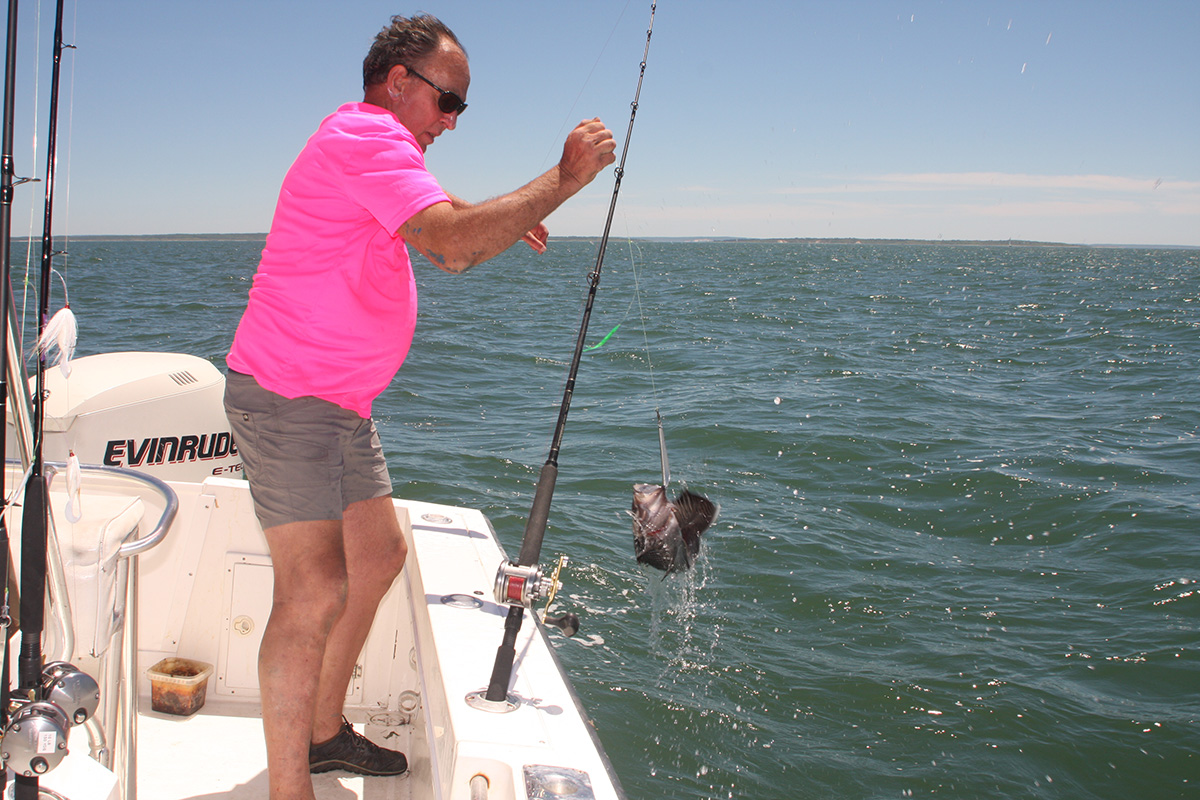
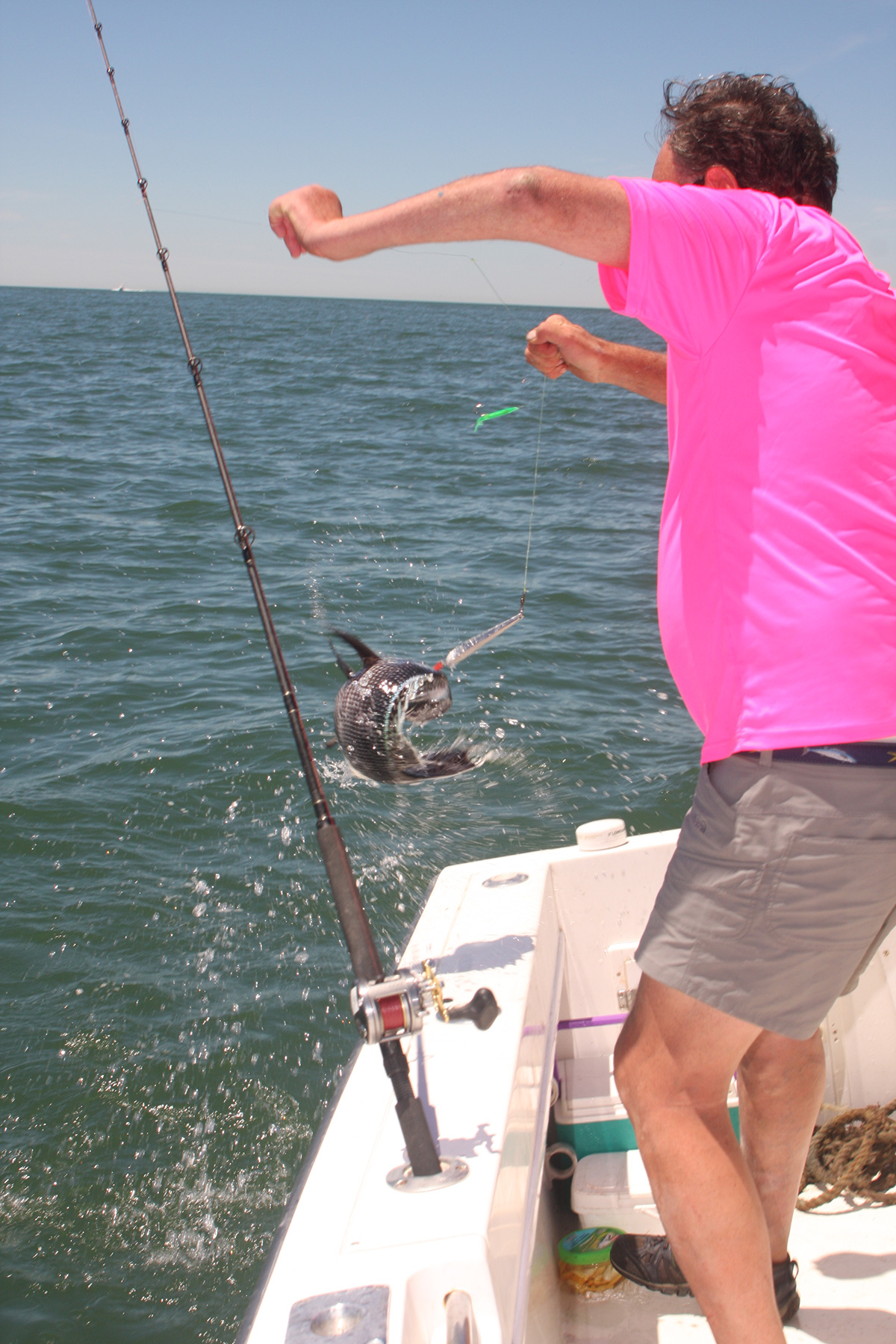
Dancing the Jig
Although not true schooling fish, pros find sea bass in clusters on structures like wrecks, reefs and rock piles during spawning and migration periods. Adults migrate inshore and northward as water temperatures increase in the spring. The northern population of black sea bass spawns inshore from mid-May to July between Massachusetts and New Jersey, although some experts believe the spawn lasts into August in cooler areas of our region. The fish then gradually return to deeper water, moving south and offshore as sea temperatures drop in the fall. That means your last shot to target them is right now.
There are many ways to work a diamond jig, depending on the species you’re targeting, but for sea bass, bluefish-style speed-jigging isn’t the most productive method because you’re constantly retrieving your jig out of the sweet spot. Also not effective is the swing-for-the-fences approach with long and fast upward rod sweeps—good for stripers or cod—but too much for sea bass.
The right technique is subtler, keeping the metal bouncing right along the bottom, as if tending a sinker, but using short 12-inch strokes by snapping the rod tip up and imparting a motion like a fluttering baitfish just inches off the bottom. Expect to hang up occasionally, and maybe lose a jig or two, but it’s well worth the reward.
A diamond’s drop is just as vital as its lift. Because of its unique shape, it can flutter sideways toward the bottom, an action that resembles a wounded or spawning baitfish. You can achieve this action by quickly dropping the rod tip. If you drop your tip too slowly, however, the line resistance will hold your jig vertical with less diagonal fluttering motion.
“It’s important to keep your jig near the bottom,” advised Capt. Ned, “or no more than a ‘rod-tip’ off the bottom, imparting a short-but-exact and fairly-swift jigging motion. These fish prefer structure, and rarely venture too far up to feed. But don’t lose complete contact with the jig, as the strike often comes on the drop. It requires practice and touch.”
Tackle selection, like jig size, is determined by the waters and conditions you expect, as you can target sea bass in depths of 30 to 60 feet in spring and summer and from 80 to 200 feet in late fall.
For deeper water, try a conventional 6-1/2- to 7-foot, 12- to 25-pound or 15- to 30-pound, med-fast action with a 3/0 size conventional, level-wind reel. For sensitivity and low drag in deep water, spool up with 20- to 30-pound braid topshot over 30- to 40-pound mono backing.
Elliott and I squeaked out our two-man limit just before the tide quit and the wind came up. It was a spectacular, warm fall day on the water, as we headed for the ramp with ceviche appetizers and pan-fried sea bass on the mind.
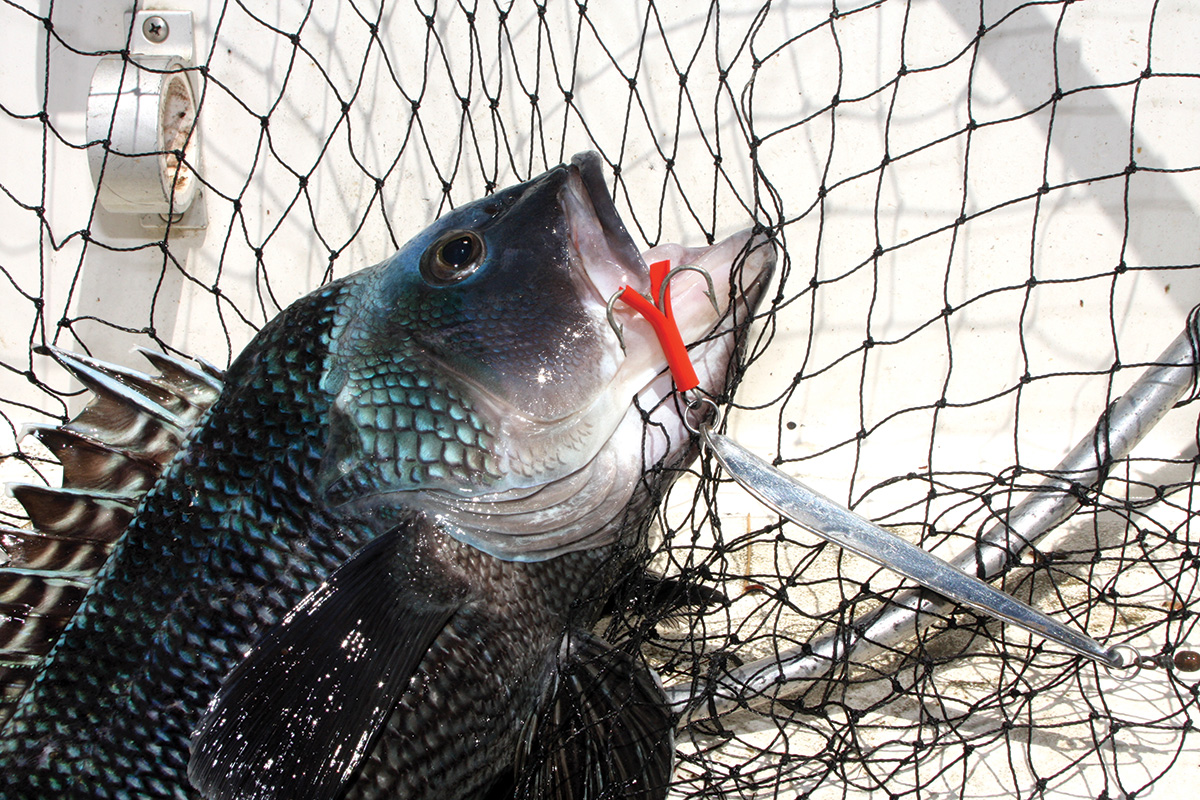
| LOCAL REGS |
|---|
| New York’s black sea bass regulations are currently a 15-inch minimum size limit; 3 fish bag from June 27 to August 31; 8 fish bag from September 1 to October 31; 10 fish bag from November 1 to December 31. Federal waters outside of the state’s 3-mile limit are closed for sea bass from September 22 through October 21. NY and RI have a license reciprocity agreement which allows New York anglers to fish Rhode Island state waters and Rhode Island anglers to fish NY waters. However, sea bass season in Rhode Island is closed during the federal closure period, so Block Island is not an option for NY anglers during the closure. While the Mid-Atlantic Fishery Management Council is considering some type of Wave 1 opening in January or February, details regarding this potential winter black sea bass fishery have yet to be finalized as of mid-October. |
